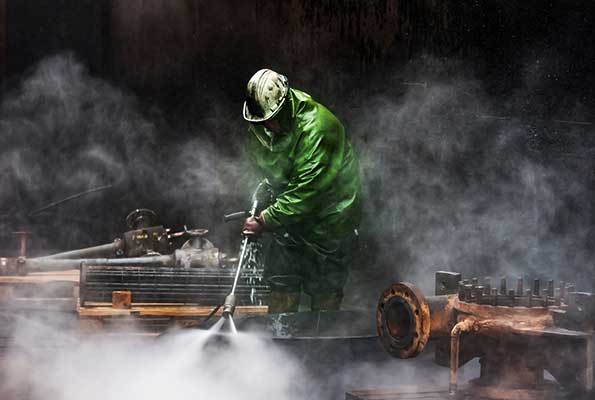The biggest economy in Europe is also one of the most vocal supporters of moving away from fossil fuels, and it sets the bar for carbon reduction goals and financial support for renewable energy sources on the continent.
However, Germany is also home to Europe’s largest chemical industry, which produces plastics, paints, acids, and other essential inputs for heavy industries and manufacturers.
Germany’s intentions to gradually phase out the usage of fossil fuels pose a potential existential danger to the entire chemical industry because most facilities run on natural gas or coal and rely heavily on crude oil as a feedstock.
For policymakers and business planners, ensuring the continued viability of such an essential sector of the German economy, even as the nation’s energy system is redesigned, will be a crucial test in the upcoming years.
The Much-Needed Stability
The remainder of Germany’s manufacturing economy, which depends on a wide range of inexpensive inputs to produce its products, might suffer greatly from an improperly handled collapse of the chemical industry’s supply chain.
Furthermore, the industry supports extensive supply chains for raw materials and finished goods, making any downturn a severe threat to European unemployment.
Guiding the chemicals sector through the nation’s energy transition successfully would maintain a critical competitive advantage for Germany’s broader economy by enabling chemical makers to decarbonize their energy supply and outputs.
Additionally, a modern, low-emission chemicals industry that produces a range of essential goods for other industries might become a significant source of export revenue for Europe’s largest economy, which aspires to establish itself as a global leader in all facets of the energy transition, including recycling plastic waste.
A Very Stressful 2023
However, the German chemicals industry must first recover from a disastrous 2022 in which rising power costs caused a 10% decline in chemicals output, a 15.5% decline in petrochemical production, and a loss for one out of every four companies in the industry, according to the German Chemicals Association (VCI).
The use of chemicals also fell in 2022 due to sharply decreased company activity. Still, as economic activity rebounded in 2023, a persisting shortage of essential chemical products drove German chemicals prices to almost record-high premiums over those offered by other producers.
According to information from Polymerupdate, the cost of polyvinyl chloride (PVC), a material used for pipelines, wire insulation, and the construction industry, is roughly 90% higher in Germany than in South-East Asia.
German high-impact polystyrene, which is used for signage, packaging, toys, and furniture, is currently trading at a price that is around 50% more than that of Asia, while linear low-density polyethylene, which is used for bags and wraps, is trading at a price that is roughly 80% higher than that of the United States.
According to Polymerupdate data, even vinyl chloride prices, which serve as the primary building block for manufacturing PVC and other goods, are trading at a rare persistent premium over Chinese vinyl chloride costs, which have historically been higher than German pricing.
A Bleeding Economy
German chemical products’ persistently high pricing relative to their foreign competitors has two serious adverse effects.
First, the high prices have undermined the German chemical sector’s hard-won reputation as a trustworthy and cost-competitive producer of essential goods, highlighting the rivals’ greater global reach and lower prices. Second, the high costs of chemicals have impacted price-conscious consumers, mainly manufacturing companies trying to control costs to maintain their existence in the face of high energy costs.
Germany, which was Europe’s largest importer of Russian natural gas and continues to struggle with electricity prices that are still far above long-term norms, has many such enterprises in a vulnerable situation.
According to VCI data, Germany has seen sharp increases in producer pricing across all significant industrial segments, including essential equipment manufacturers, machine builders, and manufacturers of high-end automobiles in different markets.
Prices increased by 26.5%, 29.8%, and 40% in 2022 for producers of bulk commodities such as metals, paper goods, and petroleum products.
These same businesses are frequently the most significant users of items made in Germany’s chemical industry. Still, they currently need to prepare to pay premium rates for industrial inputs that are quickly and significantly less expensively obtained from other vendors.
Suppose the German chemicals industry wants to secure its long-term viability. In that case, it must find a way to regain any business it has lost to commodity producers by gradually lowering the price of its products compared to those of its competitors.
The Road Ahead
German chemical manufacturers must also establish and promote their environmental credentials to secure business from climate-conscious, higher-margin clients under pressure from their clients and investors to ensure clean supply chains.
With the help of government and business organizations, Germany’s chemical makers could make significant changes that guarantee their continued pivotal position at the core of the European country’s economy even as their and their customers’ energy systems gradually move away from fossil fuels.



